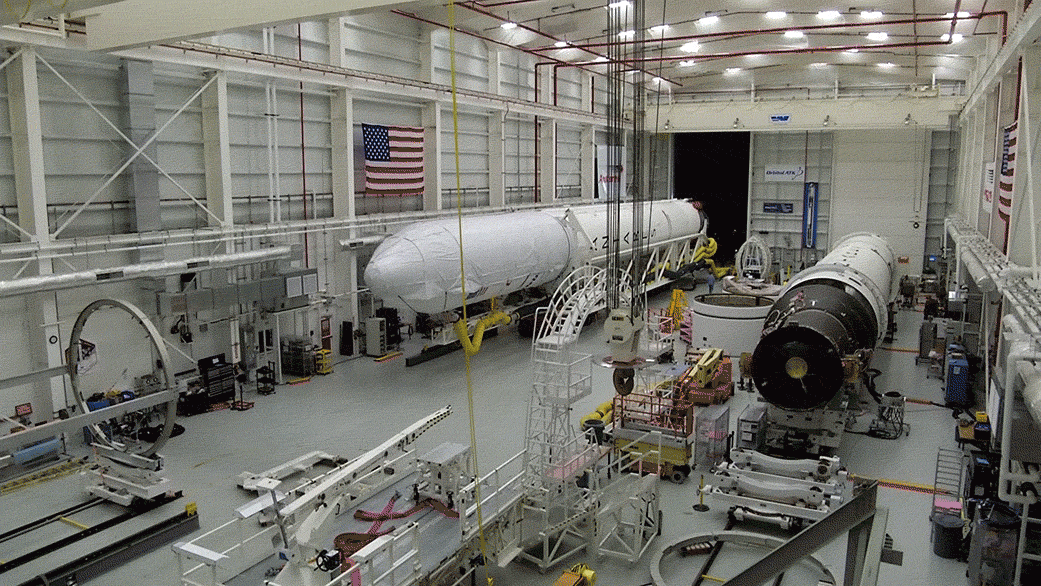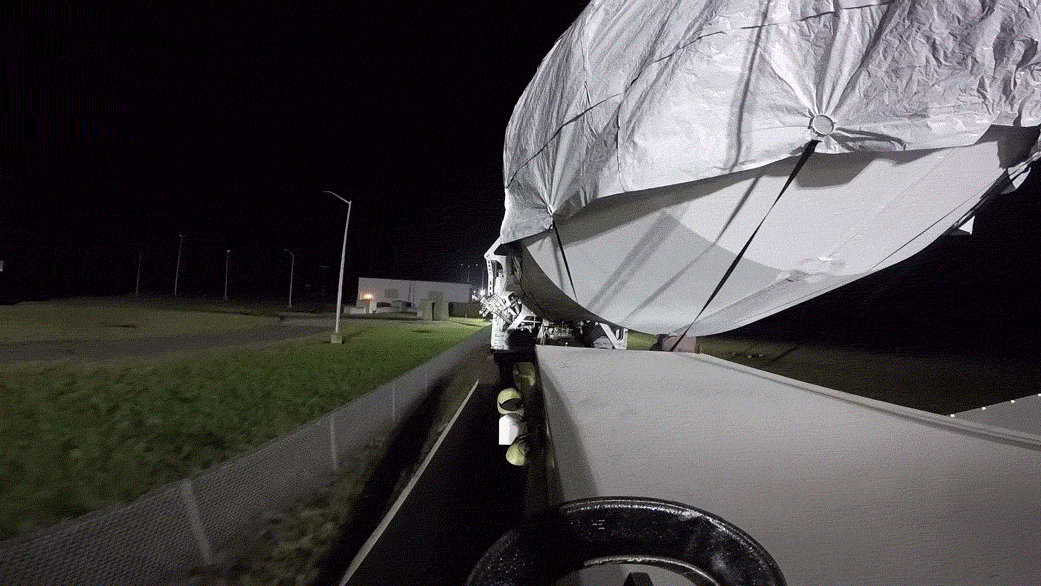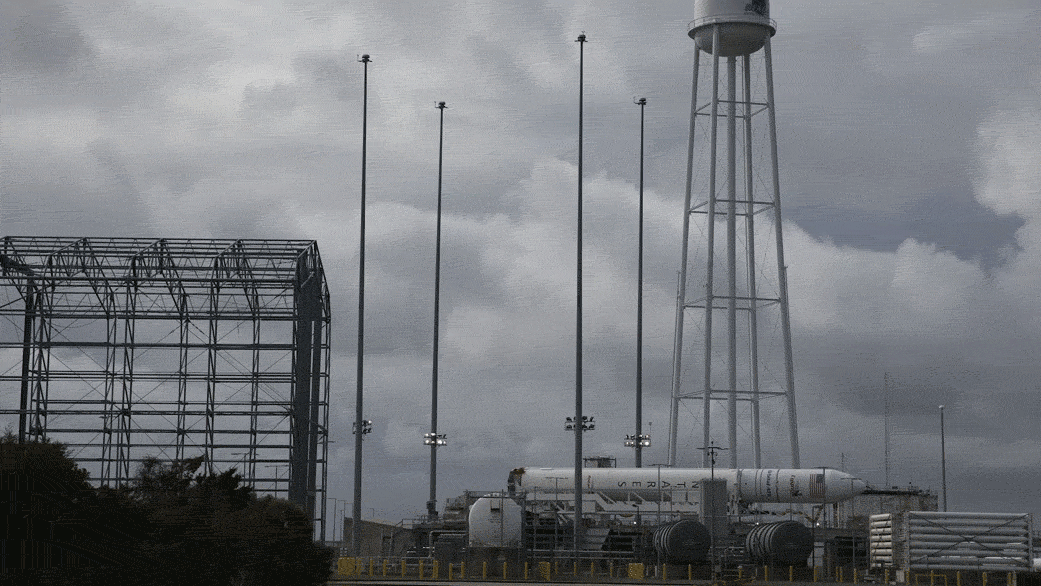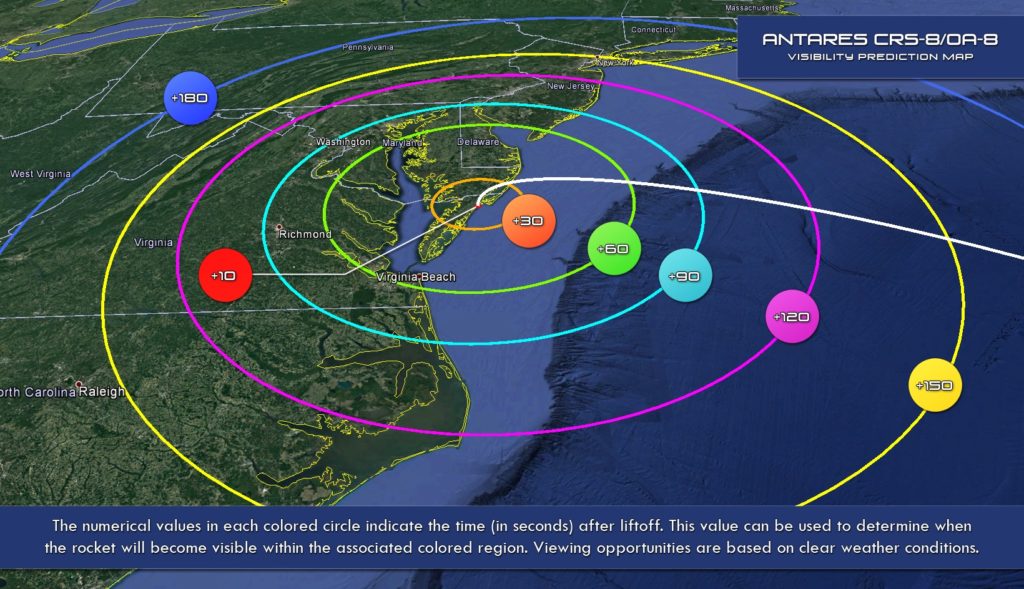The pre-launch press conference for tomorrow’s launch has concluded. Systems tests this morning went well, and weather conditions remain green.
Orbital ATK will launch its Cygnus spacecraft into orbit to the International Space Station, targeted for 7:37 a.m. EST Nov. 11, 2017, from NASA’s Wallops Flight Facility in Virginia. The launch window is open for about five minutes.
Systems tests this morning went well, with one nitrogen regulator on the ground being changed out with a replacement this afternoon. Orbital ATK’s minimum temperature constraint for Antares is 20 degrees F, so currently forecast launch temperatures (and the overall weather) are not expected to pose a problem. At launch time, temperatures are expected to be about 25 to 30 degrees.



The countdown clock begins at 1:22 a.m. EST Nov. 11. Fueling begins roughly 90 minutes before launch. Live NASA TV coverage and commentary will begin at 7 a.m., and Wallops will play live views of the launch pad on Ustream beginning at 1:15 a.m.
Sunrise occurs not long before the launch window opens, which may negatively influence the ability for viewers outside the local area to see the launch.

The journey from launch to orbit takes about nine minutes, with Cygnus then scheduled to rendezvous with the International Space Station on Nov. 13.
